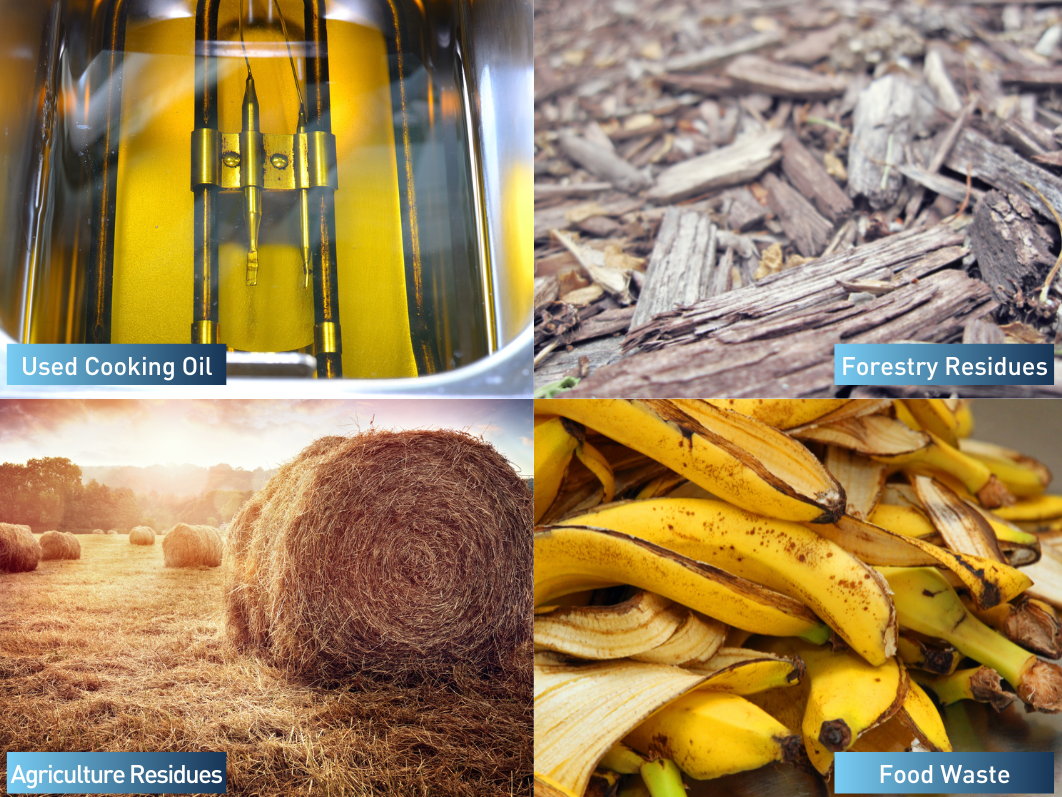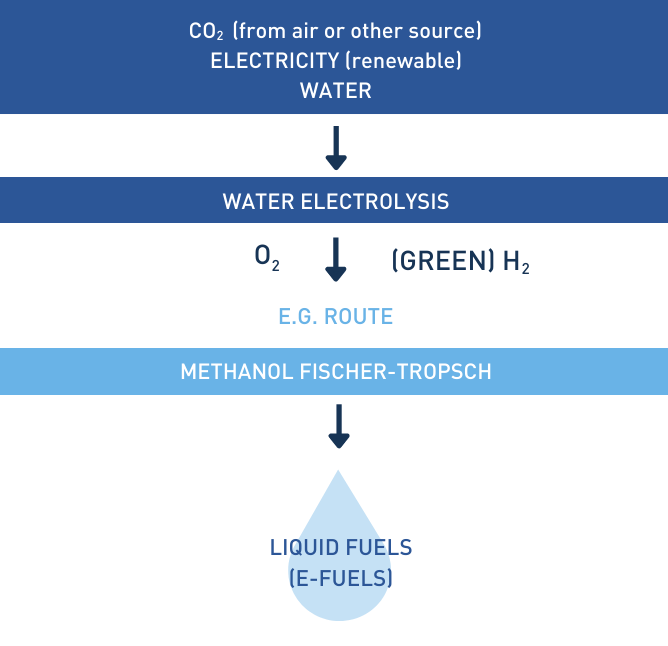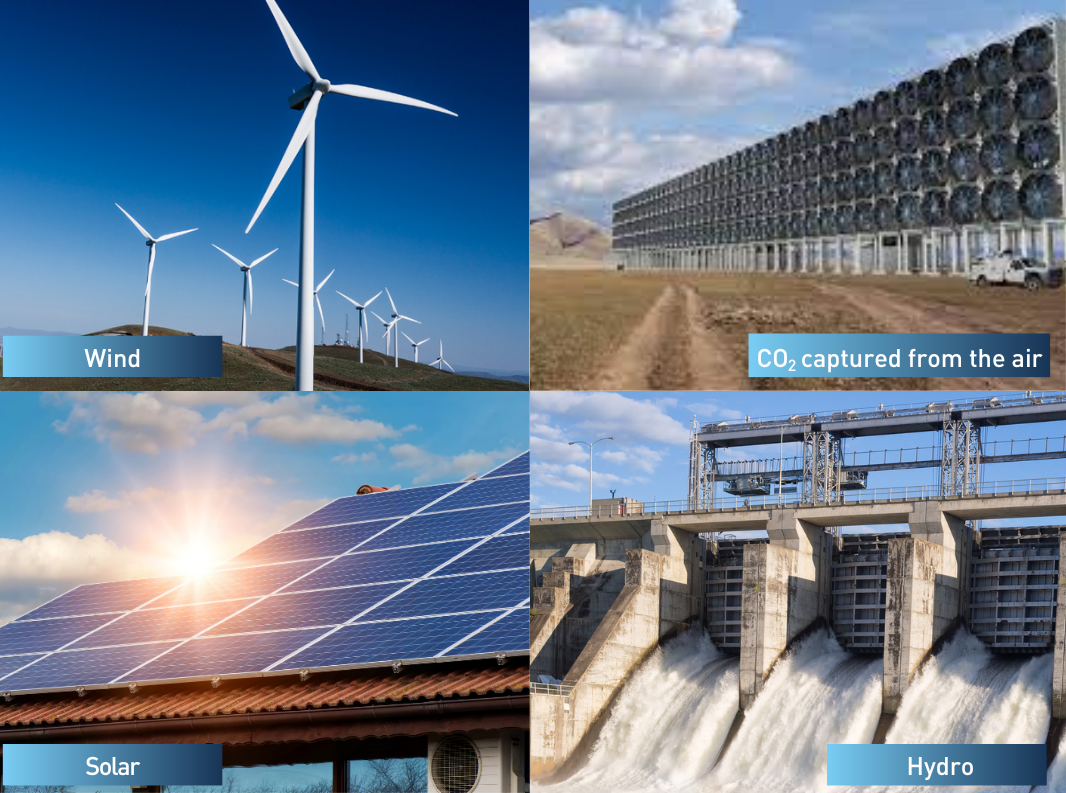Capitalising on our technological know-how and flexible infrastructures, we will increasingly switch to new feedstock to progressively reduce net carbon emissions of liquid hydrocarbons.
Advanced biofuels
Hydrotreated Vegetable Oils/Biodiesel, Biomass-to-Liquid and Waste-to-Liquid
Feedstock: Non-food-crop based such as lignocellulosic biomass including wood and residues from forestry, agricultural residues (straw and stover) and energy-crops or waste materials (e.g. waste from industry, waste oil & fats – e. g. waste cooking oils – or solid waste);
Technology: Multiple routes, including fermentation (Ethanol), hydrogenation (HVO) or transesterification of waste oils & fats (FAME), thermochemical conversion routes such as BTL (gasification and Fischer-Tropsh synthesis) or pyrolysis/hydrothermal liquefaction (HTL).
Note: the difference between sustainable 1st generation biofuels and advanced biofuels is related to the feedstock.

E-fuels
Power-to-Liquid synthetic fuels
Feedstock: Renewable electricity produced from wind, solar or hydro and captured CO2.
Technology: Water electrolysis + fuel synthesis (e.g. Fischer-Tropsch; methanol route).
E-fuels are synthetic fuels, resulting from the synthesis of green hydrogen produced by the electrolysis of water, using green electricity and carbon dioxide (CO2) captured either from a concentrated source (flue gases from an industrial site) or from the air (Direct Air Capture).




